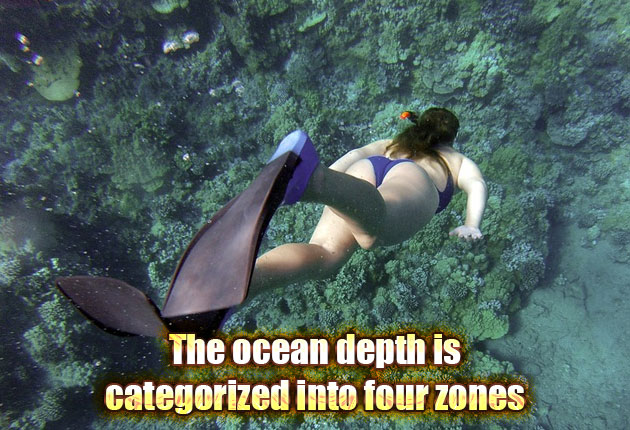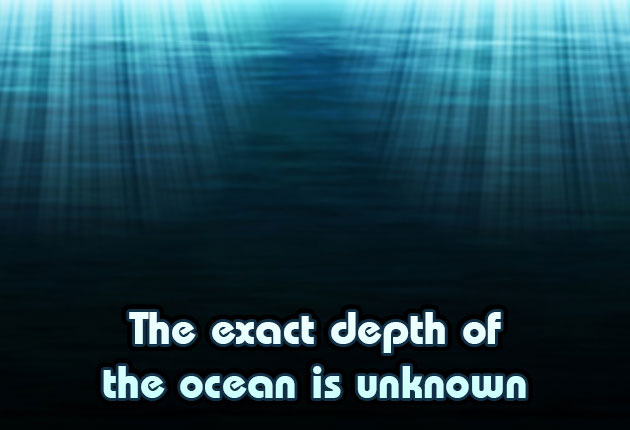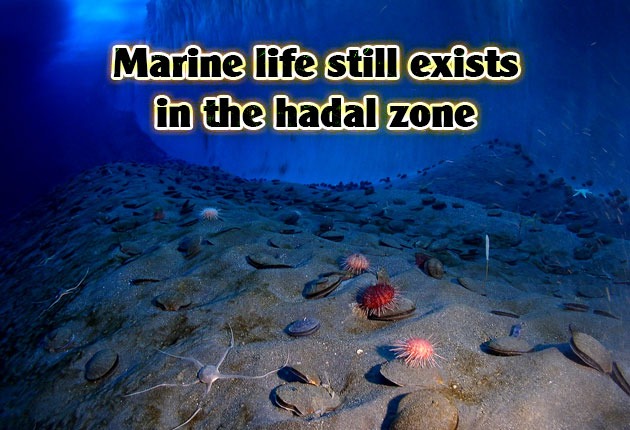Our planet’s oceans are strikingly beautiful and mystifying. Whenever we think of the ocean, we typically think of the gentle waves and the blue waters, or maybe the colorful coral reefs and diverse types of fishes swimming. But it is quite just a glimpse of the seemingly vast world underwater. For starters, did you know that 94 percent of living creatures on Earth is aquatic? Here are other fascinating facts about the deep ocean:
1. Only 5% of the Earth’s oceans has been explored.
Scientists know more about the planets that are 35 million miles away than our own ocean. Twelve people have stepped foot on the moon but only three have reached Marianas Trench, the deepest part of the ocean. We also know more about the shape, size and elemental composition of Mars, while only five percent our own ocean is explored.
In addition, it is estimated that only one-thirds of all marine creatures are identified, while newer species are constantly being discovered.
2. Oceans can grow or shrink over time.
Twenty million years ago, the Atlantic Ocean was not yet existing. But when plate tectonics caused a separation through a rift valley, the Atlantic Ocean was born.
From nothing, the Atlantic Ocean is now growing at a rate of five centimeters per year because new seafloor is created through volcanic activity along the mid-Atlantic ridge. Meanwhile, the Pacific Ocean is said to be shrinking by two to three centimeters a year because of the sea floor. It is also because of plate tectonics, since the Pacific Ocean has subduction zones on three sides where the Pacific plate folds under other plates. The Pacific Ring of Fire broadly maps the regions where subduction occurs.
4. Lakes and rivers can exist underwater.
If you have watched Spongebob, you have probably thought how absurd it is for Goo Lagoon to exist as they are already living in the ocean. While underwater water doesn’t seem possible, rivers and lakes actually exist.
An underwater river was captured by a diver and photographer named Anatoly Beloshchin 25 feet below the surface. The “river” is a mix of salt water, brine and hydrogen sulfide that leaks out the Earth’s underwater crust. It is a lot denser than regular salt water so it sinks to the bottom, forms a visible separation, and acts and flows like a river. Underwater lakes also exist, like in the Gulf of Mexico, that have shorelines and even waves.
5. The longest mountain range in the world can be found in the ocean.
The longest mountain range above the ground is the Andes which is about 4,500 miles long. Stretching through seven countries in South America, from Venezuela down south to Colombia, Ecuador, Peru, Bolivia, Chile and Argentina.
However, the world’s longest mountain range can be found in the oceans, which is the Mid-Oceanic Ridge. It is way longer than Andes as it runs more than 35,000 miles, with peaks higher than the Alps. The chain of mountains runs through the middle of the Atlantic Ocean and into the Pacific and the Indian oceans.
6. The ocean depth is categorized into four zones.
Depths from the surface to around 200 meters below is known as the littoral zone. It covers the region between high tide and low tide and the area between terrestrial and marine conditions.
The bathyal zone lies around 200 meters to about 4,000 meters below the surface, covering the continental slope. While, the abyssal zone is 4,000 and 6,000 meters deep, covering the abyssal plains.
Underwater places deeper than that is the hadal zone. It is usually found in oceanic trenches that are formed by shifting tectonic plate subduction that drive the huge abyssal plains steeply down to even 11,000 meters down in some places.
7. The exact depth of the ocean is unknown.
Using echo sounding, a British Royal Navy vessel discovered in 1951 that the deepest location in the ocean was 10,900 meters.
However, in 2010, researchers have discovered using sonar mapping that the deepest part of the ocean is found at the Mariana Trench in the Western Pacific with the depth of 10,994 meters. Four other trenches in the Western Pacific also exceed 10 kilometers: Tonga, Philippine, Kermadec and Kuril-Kamchatka trenches.
However, the exact depth is still difficult to compute. It is also possible that a deeper location is yet to be discovered when more advanced and accurate ocean mapping devices would be invented in the future.
8. The hadal zone is named after the Greek god Hades.
The term “hadal” comes from “Hades,” the Greek kingdom of the underworld, brother of Zeus and Poseidon, and the god of underworld himself.
In modern times, Hades is depicted as evil, but in mythology, he was portrayed as unreasonably stringent rather than actively malicious. He strictly prohibited the inhabitants of his kingdom to leave, which is a suitable analogy for hadal fauna, as most species are often limited to trenches and are rarely capable of going elsewhere.
9. Marine life still exists in the hadal zone.
Contrary to what media portrays, the deepest parts of the ocean are not inhabited by monsters of the deep or aliens; it is a poorly understood part of the ocean that is mostly inhabited by types of snails, worms, hoppers and sea cucumbers. The most common groups of marine organisms found in the hadal depths are bivalves, ampiphods, gastropods, polychaetes, holothurians and amphipods.
The supergiant specie of amphipod, the Alicella gigantean, is 20 times larger than its shallower-dwelling cousins. However, this supergiant is not actually huge – the largest specimen ever found was a 13.4-inch-long female. Creatures that can survive in the hadal zone are usually very tiny, and can withstand very low temperatures, lack of oxygen and high pressures.
10. Corals also wear sunscreen.
Not only tourists who go to beaches wear sunscreen. Scientists have discovered that corals on the Great Barrier Reef also produce natural sunscreen over millions of years. The natural sunscreen protects them, as well as fishes that feed on them, against the sun’s harmful UVA and UVB rays.
Of course, when discoveries like these pop up, you would expect that there will be researchers who would attempt to extract it for human use. Some claim they are working to imitate the corals’ natural sun protection.
11. You can extract gold from the ocean.
Gold-digging is not only possible on land – you can also do it in the ocean, but only harder. There’s about 20 million tons of gold floating in saltwater but it is so dilute that its concentration is on the order of parts per trillion. You won’t get more than 13 billionth of a gram of gold in a litter of saltwater.
There is, however, more concentrated gold in the ocean floor that has to be mined. Because it is usually located one to two miles below the surface and encased in rocks, mining for it may not be worth it. There is also no existing cost-effective way to extract gold from the ocean. The National Oceanic and Atmospheric Administration (NOAA) estimates that if all the gold were extracted from the world’s oceans, each person could have 4 kilograms of the precious metal.
12. Historical artifacts abound in the deep ocean.
The oceans are considered as the great museum and preserver of history. There are more artifacts and remnants of history that can be found in the ocean than all of the world’s museums combined, according to National Geographic. The majority of shipwrecks are still undiscovered, and the NOAA estimates it to be around a million.






